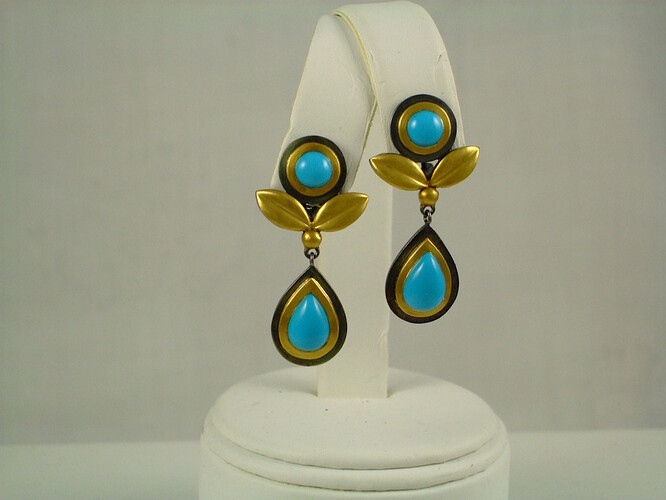My first question is what kind and brand of solder are you using?
Paste solders are most likely to fail.
The bezel must be a fairly tight fit on the stone. The less you have to
move the bezel the better.
From your photos it looks like you may be over finishing where the side
walls meet the base. If you want a smooth clean look there set the stone
first before filing and finishing the outside bottom edge where the seam
is.
Have fun and make lots of jewelry.
-Jo Haemer
www.timothywgreen.com
This is a good thread, shows how even the “simplest”–a very subjective term–procedures can have unknown issues. Love the range of solutions!
I’ve seen this many times. Someone new and inexperienced. This is not bad, just a good learning point. First I would suggest after you pickle the piece following the soldering, check again for any pinpoint areas of light leakage. Too many figure if it is dowered before the pickle it was done properly and they don’t have to check. Next the flat surface is another suggestion that has been covered. Another thing is how do you watch to see the solder flow through from one side to the other side of the bezel? Yes you can see probably 3/4th if it is stationary, but you are missing part of it. I have a nice rotating board that I use. It is about 25 years old so no it is not one of the new fangled things they think are so inventive. Many people have their own way of soldering, It is what has worked out to fit what they do. There is no one right way. So I will go further from here to tell you how I do mine. It depends on the size of the piece what surafce I put it on that is on top of the rotating surface. If it is large, I use a screen on a tripod in the center of the annealing pan held firm with the lumps of stuff in it. If it is smaller, I use a charcoal block. I flux the whole backing sheet. Then I take little snippets of hard solder and put on the inside of the bezel sitting right up against the bezel itself. It needs that contact. I use a paint brush to put them there that has been dipped in flux. When I start the heating to solder, I concentrate the flame in the center of the backing plate, ignoring the bezel itself. Reason being that the bezel wire is usually thinner than the backing plate and it needs more heat. I watch the flux bubble, and reposition any snippets that move back to their original position. Before long they are not moving and the flux settles down. Then you watch for the color change of the metals. About the time you see the slight tinge of red be ready. Also i forgot that I keep the torch moving a bit in a circle so that the heat is more diffuse not a steady shot at the metals. If the center of the bezel is not the big, it goes much quicker once it is heated. Once you see the solder begin to melt and flow, switch to the outside of the bezel with the torch. You will see the solder flow out under the bezel and form a bright line. walk that line around the bezel by turning the rotating table with one hand. I actually do it with the solder pick point instead of my hand. that way the pick is always ready in my hand. It goes fast, but if you watch the line, it will walk all the way round. If it was flat it will not be a problem from there. If it wasn’t you will see daylight, but sometimes not until after it is pickled. Like I said there are many ways people do bezels. This one works for me over 99% of the time. I do have that occasional one that I want to throw against a wall. That ids when you put it aside and stare at it for weeks until you finally pull it apart and start over. Make very sure you check after pickling.
Aggie
Tons of good advice and things to try here! The thing that seems most likely is bezel too thin / filing away too much material and leaving weak spots. Gonna try a thicker bezel and more solder to see if getting that more stable join helps.
I’ve also been finishing my bezel all the way around before I add anything else, too, so any weaknesses I created by filing away material would be exacerbated by subsequent heatings – @rmeixner, the idea of only finishing the portions I need to add things to and then doing the rest later hadn’t occurred me. What a good idea.
Seriously, a lot to digest and many things to try in this thread. Thank you, thank you, thank you everyone!
This discussion prompts me to ask another bezel related question. I make heavy cuff style and a few bangle style sterling silver bracelets. I also cut and polish my own stones. This allows me to deviate from industry standard sizes and mounting methods for the stones. I usually make either a traditional roll over bezel or solder on tabs or prongs to secure the stone. Lately I have been cutting round, fairly flat topped, stones and setting them in very wide walled bezel cups. For design reasons I would like to avoid either prongs or tabs and the width of the bezel wall makes it impossible for me to move the wall to securely hold the stone in the cup. While I don’t necessarily like the practice, I have been gluing them in place with a good epoxy glue. I rough up the inside of the bezel cup and the back of the stone so that there is a little more area for the glue to hang on to. To date I have not had any failures. I have considered adding just a couple small prongs just in case the glue fails or even drilling a hole thru the middle of the stone and soldering a piece of wire so that it will go through the hole and basically riveting the stone in place. There is the challenge of getting the rivet in the right place so that it all lines up. Again, both options will impact the design. If anyone has any ideas about how to mechanically secure the stone in place without adding anything to the bezel I would appreciate hearing about them. If I can figure out how to do it, there may be a picture of one of these bracelets attached to this post …Rob
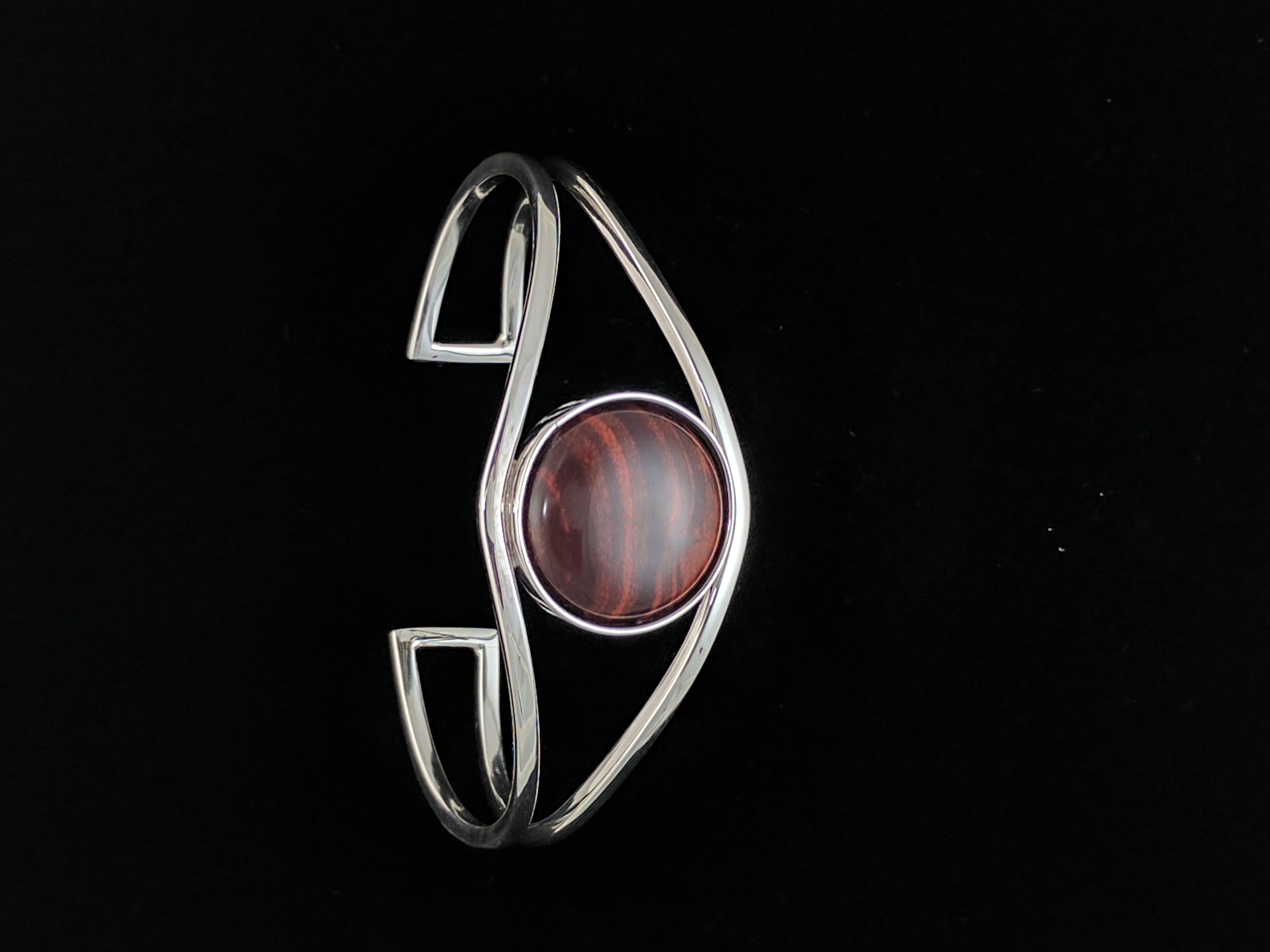
That’s a lovely bracelet! I admire the open-faced look of the uncovered stone. Would you be unhappy if the back looked fiddled with? If not, I would make the bezel a ‘pinch’ bezel; ie, canting inward from bottom of the cab to the top, entirely open on the back to start. Mount the stone from the rear, and then do the work of holding the stone from the back. Maybe numerous tabs that bend over the back of the cabochon? Any such would have to avoid scratching the wearer’s arm, of course.
Have fun,
Lorraine
Lorraine…That would work. I have done it that way with pendants, but never a bracelet. Good suggestion. Thanks…Rob
Hello Rob,
The bracelet you showed reminds me of a piece by Michael Bondanza that I like a lot. You can get a pretty good enlargement of the following image:
I have no idea how he set that moonstone except I think there may be a groove around the base of the stone and a bezel is rolled into that groove.
Since you do your own lapidary work, could you cut a groove into the base of your cab and use a very thin but tall bezel, roll the top of the bezel into the groove around the stone, then turn this over and roll the base of the bezel around a backing? Kind of double bezel setting? Or perhaps have a groove cut into the bezel backing too, and roll the bezel into that as well? You could get the appearance of a thick bezel. I guess this may be a crazy idea, but it should work ‘on paper’ so to speak, and maybe in the hands of a skilled craftsman.
Regards,
Neil A
This ring was part of a set with the necklace I cited earlier. Perhaps the side view helps to see how the moonstone was set.
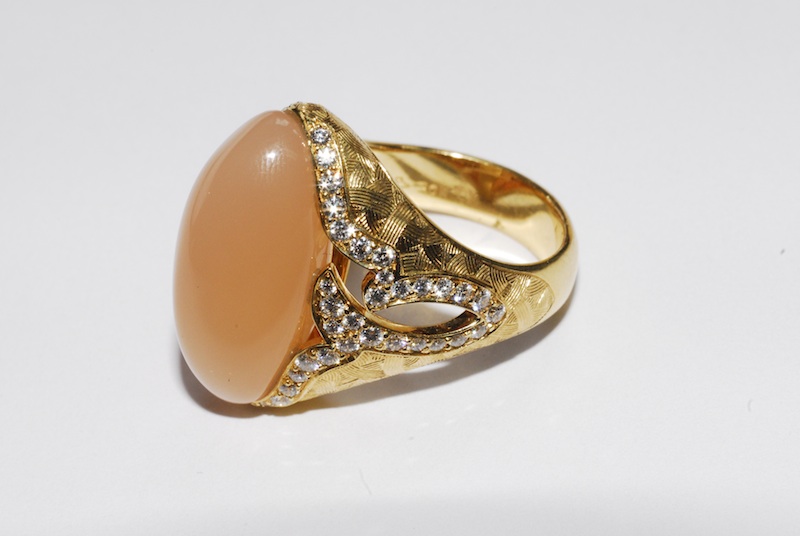
neil A
Rob –
Nice piece, btw. I have attached a photo of a piece that I made some 20 years ago that used a ~28mm dia. x 4.4mm thick slice of deer antler set in an open back “bezel” of 2mm sterling. Facing the same issue as you, being unable to form the bezel over the sllice (+ there being no back) I simply drilled 3 radial holes around the circumference of the bezel and into the antler slice then used brass wire “pins” to fasten the antler slice into the bezel. No adhesive was used (pins fit rather snug.)
Whether or not this might work for you would probably depend (at least) on the thickness of the cab and whether or not it was opaque (wouldn’t want to see pins sticking into the cab!)
– alonzo
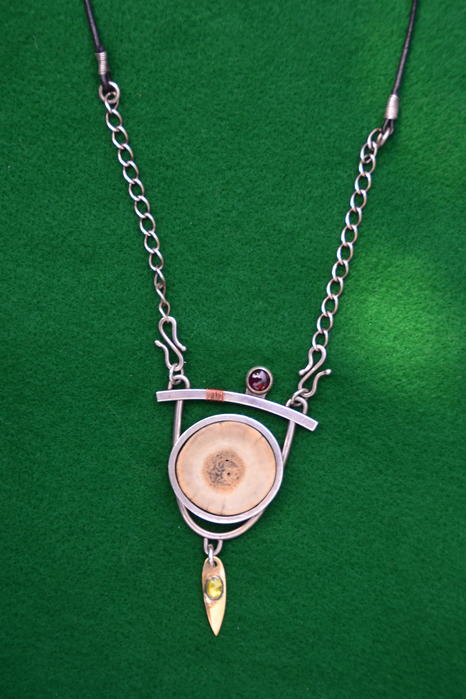
I love your style here, Rob. (I may be a little biased – Easily Distracted by Shiny Objects - Alec Kercsó - #39 by Alec) But truly, a beautiful bracelet.
I’ve struggled as well about epoxy adhesive. I don’t know how to create an otherwise invisible connection. In the following piece, I did exactly what you describe, roughing the bezel and the base of the cab to create a stronger mechanical bond. So far, it’s been very stable.
Interestingly, I was recently looking at the SWAIA standards for Santa Fe’s Indian Market entries, and for chip inlay jewelry, they prescribe a ratio of no less than 85% stone to 15% adhesive.
Best,
Alec
Morning Rob,
Ted here,
I read your question and thought that setting from the back is the way to go. Then Lorainne suggested the same.
Id go the engineering route by replicating the spring steel circlip used to retain ther gudgeon pin on a piston, using a s/steel wire. cut a 1/2 round groove just above the base of the stone, then spring in the wire. any possible slop id just fill with 2 part epoxy.
If at any time during making youd need to try the spring wire and need to get it out, possibly too short! then a small vertical groove into which you can push a pin punch to spring out the wire as per a piston would work.
hope this helps.
Rob, maybe you could move the bezel wall with a hammer or a hammer handpiece.
Betty…I have tried. It is sterling and I can’t get it to move even after embedding the piece in thermal setting plastic to hold it. I intend to buy some fine silver (.999) wire and try that. I make the bezel wire by just rolling a piece of 10 gauge wire until it is about .75 mm flat. thanks…Rob
Rob- How are you bezel setting? Using a rocker or burnisher or hammering?
We do heavy bezels all the time out of various metals. We just set them
with a chasing hammer and a setting punch. . Attached see a shot of a pair
of earrings I just made. Hammered bezels. 22kt gold and sleeping beauty
tourquoise. “But that’s 22 kt gold.” Yes but we do it all the time in gold,
silver and platinum. The trick is to bevel the outside upper edge to a 45
degree angle. That way the metal will want to move towards the stone and
not just mushroom out in both directions on the upper edge. The bezels in
the earrings were 1.5 mm thick.
About the only time I set from the bottom is if the stone is too fragile
to hammer on like the example below. In that case I made a 24 kt underbezel
that was fully annealed. I’ve done it in fine silver too for very fragile
cameos. The underbezel is so soft that it contours to the uneven bottom of
the shell cameo. After it is in place then I raise beads to hold it in
place from the back. A very old school technique.
Have fun and make lots of jewelry.
Oh, and step away from the glue son:-)
Jo Haemer
www.timothywgreen.com
Rob, I quite agree with Jo that a hammered setting is your best bet for your bracelets.
I wonder if the reason that you’ve not had luck with a hammer is that you’re trying to push the bezel over the stone from the outside rather than upsetting it from the top. 0.75mm is rather thin for a hammered tube, not enough metal to work with. On those occasions I’ve made tubes for hammer setting I’ve made them at least 1mm thick so the setter has plenty to work with.
I don’t mean to teach my grandfather how to suck eggs, but on the off chance that you are unfamiliar with the technique for a hammer set tube I’m including a diagram.

I am enjoying this discussion of bezels. I believe that in 30 years I have set five cabs. Three in bezel cups and two in bezels I made start to finish. While my pieces tend to be all our combinations of Sterling, Gold, or Copper I have left the stone work to Rob which as you can see he is very good at it.
Recently I have decided to go adventuring in the direction of bezels and cabs of one type or another. Largely to work in with my kilt pins and Sporan fixtures. For my set pieces I am looking at horn and mother of pearl. I believe I have deluded my self into thinking it can’t be a lot different than the MOP inlay work I have done in some banjo head stocks.
I will try and add a photo of a Bolo Slide I am finishing this weekend and a piece of Sporan flash with a horn tip. The MOP us just setting in the cup.
Very basic bezel work I assure you.
But the start…
Don Meixner
Sent from my Verizon Wireless 4G LTE DROID
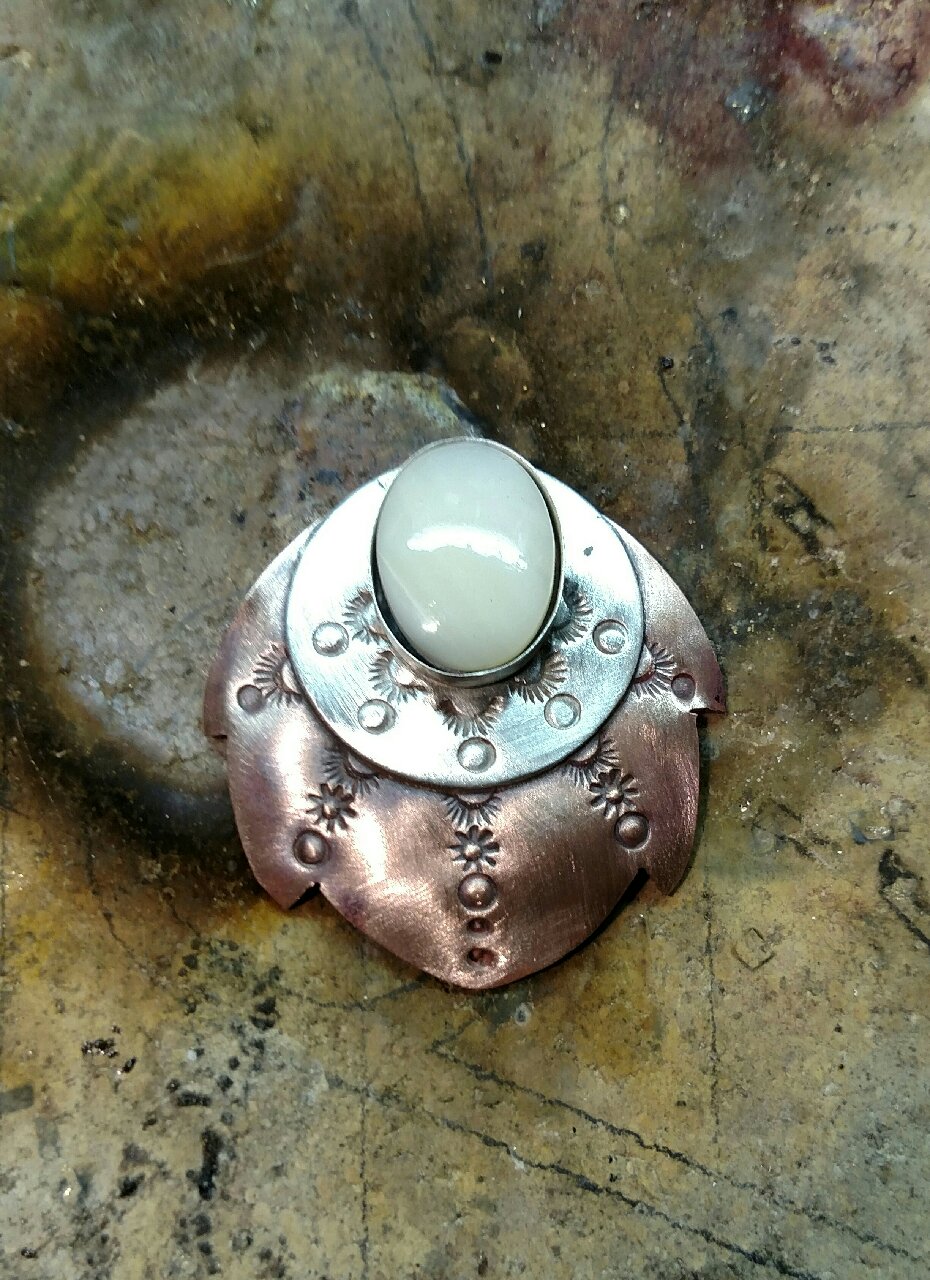
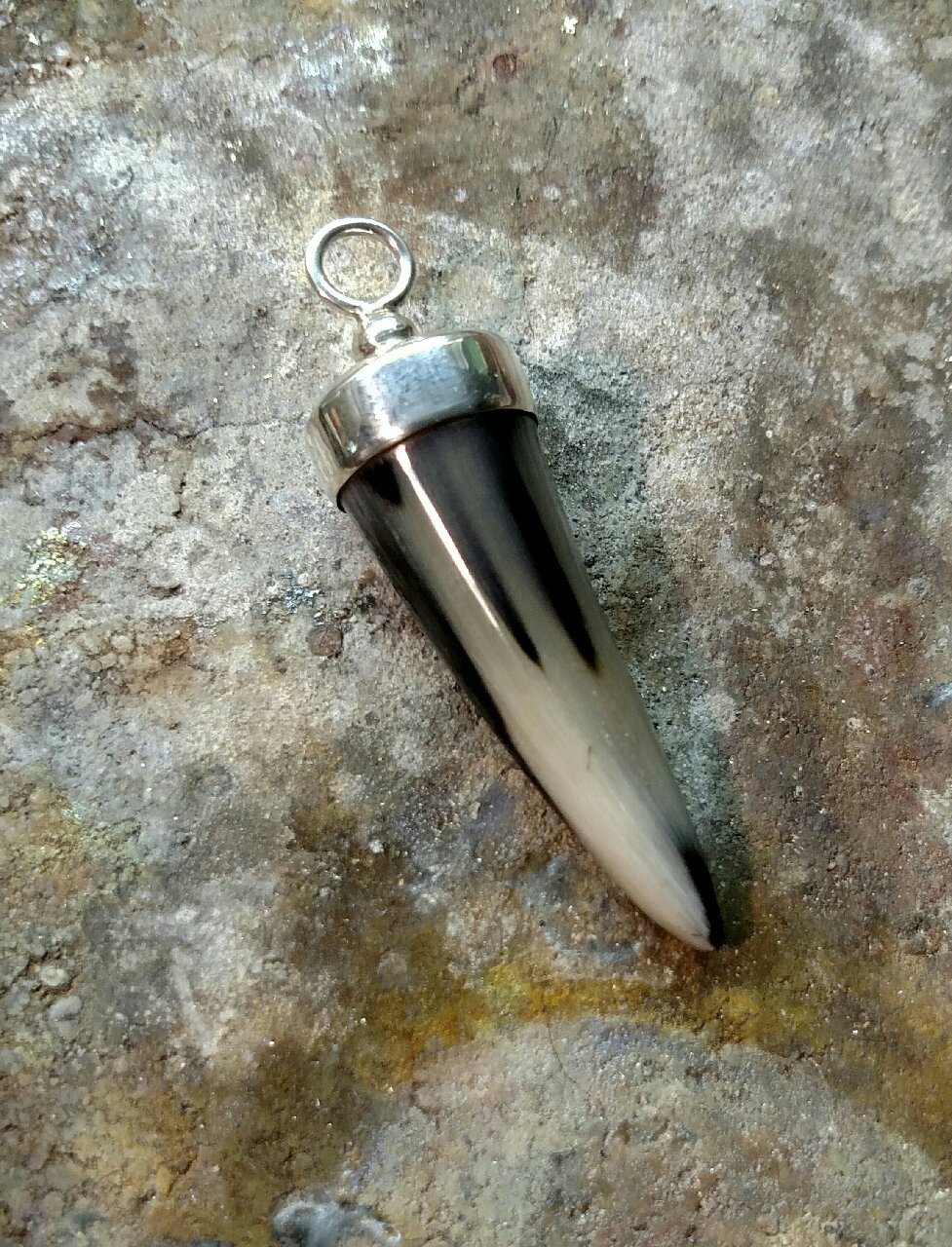
Don, did you polish that horn? If so, what did you use?
Jo…I was hoping to hear from you as I remember you writing several times that you regularly set stones in wide bezels. I just can’t get the metal to move, but the top surface is flat. That is the look that I was trying for, so I glued it just to see how it would look. I agree with you about glue. Fortunately, a little heat and the glue lets go and I can start over. My plan is to try and finish the surface at an angle and then see if I can move it. I have both a hammer on my flexshaft tool and have made small punches. The other idea is to make the bezel out of fine silver. I like the back being closed, but could also taper the inside of the bezel cup and solder tabs on the bottom. I do this when the stone is translucent. I don’t set any faceted stones so, I have never learned to raise beads. I know that this is basic stuff, but Dad never did it, and I haven’t taught myself how to do it yet. I am nearly 70 with too much to learn and not enough time to do it in. Thanks all for your comments to mine and the original posters questions. This is the beauty of Orchid. Anyone at any point on the curve can give and get. Thanks…Rob
Jo, the bezel on the earrings looks flat, as if the bezel wall is thick and short.
So if the bezel wall is 1.5 mm thick, it appears to be only half a mm tall.
Beveled edge or not, how are you able to push on such a short, thick wall?
